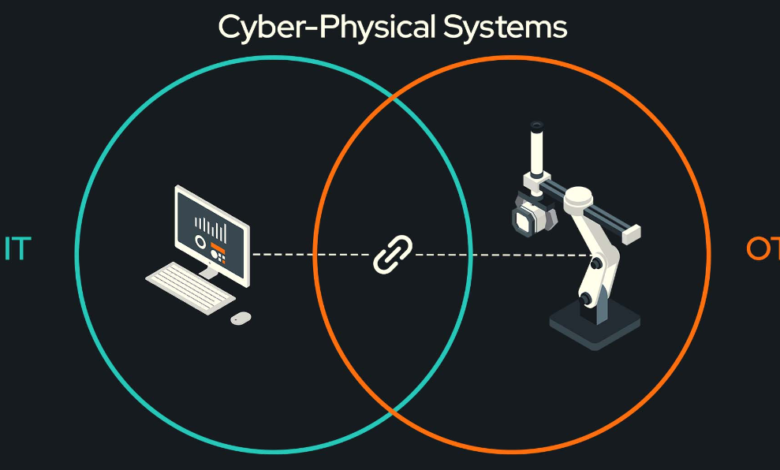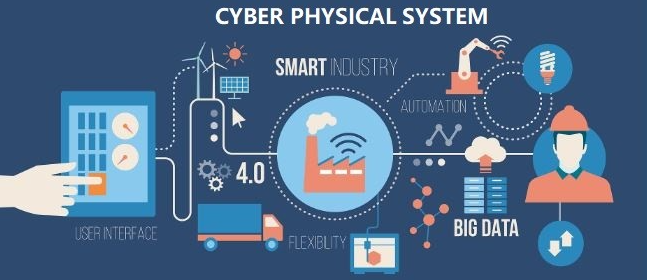What Is Cyber Physical Systems

What if machines could not only perform tasks but also learn, adapt, and make decisions on their own? Cyber Physical Systems bring this vision to life, merging the physical world with digital intelligence in ways that were once the stuff of science fiction. From autonomous vehicles to smart grids, these systems seamlessly integrate computation with real-time physical processes. They are transforming industries, reshaping cities, and redefining the future of innovation. But what exactly are Cyber Physical Systems, and why are they so pivotal in today’s technological landscape? Let’s explore the revolutionary potential behind this powerful convergence.
Table of Contents
What is a Cyber Physical System?

A Cyber Physical System is a sophisticated integration of computational algorithms and physical processes, where both interact seamlessly through a network of sensors, actuators, and real-time data. These systems bridge the gap between the digital and the physical world, enabling machines to not only perform tasks but also adapt to environmental changes and make autonomous decisions. In Cyber Physical Systems, the embedded software continuously monitors and controls physical processes, creating a dynamic loop of feedback that enhances efficiency, precision, and adaptability. From smart factories to autonomous transportation, Cyber Physical Systems are at the forefront of technological advancement, shaping the future of innovation across diverse industries.
Features of Cyber-Physical Systems
1- Real-time data processing
Real-time data processing is a cornerstone of Cyber Physical Systems, enabling them to function with unparalleled efficiency and precision. This capability allows systems to continuously gather data from various sensors and immediately analyze it, facilitating instantaneous responses to dynamic conditions. For instance, in a smart manufacturing environment, machines can adjust their operations based on real-time input, optimizing performance and minimizing waste. The integration of real-time data processing ensures that Cyber Physical Systems can operate autonomously, making critical decisions without human intervention. This responsiveness not only enhances productivity but also significantly improves safety in environments where rapid adjustments are essential.
2- Autonomous decision-making
Autonomous decision-making is a transformative feature of Cyber Physical Systems, allowing them to operate with remarkable independence. By leveraging sophisticated algorithms and machine learning, these systems can analyze vast amounts of data and make informed decisions without human input. For instance, in autonomous vehicles, this capability enables real-time navigation adjustments based on traffic conditions, weather changes, or unexpected obstacles. Such responsiveness not only enhances operational efficiency but also significantly improves safety by minimizing the risk of human error. As Cyber Physical Systems continue to evolve, their ability to make autonomous decisions will redefine industries and pave the way for smarter, more efficient environments.
3- Interconnectivity
Interconnectivity is a fundamental attribute of Cyber Physical Systems, allowing disparate devices and networks to communicate and collaborate seamlessly. This intricate web of connections enables real-time data exchange and enhances the collective intelligence of the system. For example, in smart cities, traffic lights, vehicles, and pedestrian signals interact dynamically to optimize traffic flow, reducing congestion and enhancing safety. The ability to integrate diverse technologies creates a robust ecosystem where information is shared effortlessly, paving the way for innovations such as predictive maintenance and remote monitoring. As Cyber Physical Systems continue to proliferate, their interconnectivity will play a crucial role in shaping intelligent environments that respond proactively to human needs and environmental changes.
4- Scalability
Scalability is a vital characteristic of Cyber Physical Systems, enabling them to adapt and grow in response to evolving demands. This flexibility allows systems to integrate additional devices or expand functionalities without sacrificing performance or efficiency. For instance, in industrial settings, a scalable Cyber Physical System can accommodate new machinery and sensors, enhancing production capabilities while maintaining seamless operation. This capacity for growth ensures that organizations can respond to market fluctuations, technological advancements, and increased data volumes. As industries continue to evolve, the scalability of Cyber Physical Systems will be essential for fostering innovation and sustaining competitive advantages in a rapidly changing landscape.
5- Resilience
Resilience is a critical aspect of Cyber Physical Systems, ensuring their robustness and reliability in the face of disruptions. These systems are designed to withstand failures, whether due to environmental factors, cyberattacks, or unexpected operational challenges. By employing redundant components and adaptive algorithms, Cyber Physical Systems can quickly recover from disturbances, maintaining functionality and minimizing downtime. This inherent resilience not only safeguards vital processes but also enhances overall system performance. In sectors like healthcare and transportation, where reliability is paramount, the resilience of Cyber Physical Systems ensures that they continue to operate smoothly, even under adverse conditions, thereby fostering trust and efficiency.
The integration of Cyber Physical Systems is revolutionizing industries, bridging the gap between digital intelligence and physical reality, thereby unlocking unprecedented opportunities for innovation.
Characteristics
| Characteristic | Description |
| Real-time interaction | Cyber Physical Systems continuously monitor their physical environment, allowing for instantaneous data processing and feedback. This capability ensures that the systems can react promptly to fluctuations or anomalies, optimizing performance and maintaining stability across various applications. |
| Autonomous decision-making | These systems leverage advanced algorithms and machine learning to analyze data and make informed decisions independently. This characteristic enables them to adapt to new information, improving efficiency and reducing the likelihood of human error in critical operations. |
| Interconnectivity | Cyber Physical Systems are designed to function within a networked environment, allowing seamless communication between different devices and systems. This interconnectedness enhances collaboration and coordination, enabling the aggregation of data from multiple sources to drive intelligent decision-making. |
| Scalability | These systems can grow and evolve as organizational needs change. Scalability ensures that Cyber Physical Systems can integrate new devices and functionalities without performance degradation, making them suitable for a wide range of applications—from small-scale operations to large industrial settings. |
| Resilience | Built with redundancy and adaptability in mind, Cyber Physical Systems can recover quickly from disruptions, whether due to technical failures or external threats. This resilience ensures that critical processes remain operational, enhancing reliability and fostering trust in automated systems. |
Applications of Cyber-Physical Systems
- Smart Manufacturing: Automates production processes through interconnected machinery that optimizes workflows, reduces downtime, and enhances quality control.
- Healthcare Monitoring: Utilizes wearable devices and remote monitoring systems to track patient health in real time, facilitating timely interventions and personalized care.
- Autonomous Vehicles: Integrates sensors, GPS, and real-time data processing to enable self-driving cars to navigate safely and efficiently, reducing accidents and improving traffic flow.
- Smart Grids: Enhances energy distribution systems by monitoring and managing electricity use, optimizing resource allocation, and integrating renewable energy sources.
- Smart Cities: Implements interconnected systems for traffic management, waste management, and public safety, leading to improved urban living conditions and resource efficiency.
- Agricultural Automation: Employs sensors and robotics to monitor soil conditions, optimize irrigation, and automate harvesting processes, increasing crop yields and sustainability.
- Supply Chain Management: Enhances logistics and inventory management through real-time tracking of goods, optimizing routes, and improving demand forecasting.
- Environmental Monitoring: Utilizes sensor networks to monitor air and water quality, track wildlife, and detect natural disasters, contributing to better environmental management and conservation efforts.
- Home Automation: Integrates smart devices in residential settings to manage lighting, heating, and security systems, enhancing comfort and energy efficiency.
Cyber-Physical Security Warnings
| Step | Description |
| Understanding Vulnerabilities | Recognize that Cyber Physical Systems are susceptible to various threats due to their interconnected nature, blending physical and digital environments. |
| Identifying Security Threats | Monitor for potential risks such as malware attacks, unauthorized access, and data manipulation that could compromise system integrity. |
| Issuing Alerts | Develop a robust system for generating security warnings that notify operators of unusual activities or potential breaches in real time. |
| Analyzing Impact | Assess the potential consequences of detected threats on operational efficiency and safety, especially in critical applications like healthcare and transportation. |
| Implementing Security Measures | Establish comprehensive cybersecurity protocols that include firewalls, encryption, and access controls to protect against vulnerabilities. |
| Conducting Regular Monitoring | Utilize real-time monitoring tools to continuously oversee the health of Cyber Physical Systems, ensuring any anomalies are promptly addressed. |
| Formulating an Incident Response Plan | Create a structured response strategy to manage and mitigate the impact of security breaches, ensuring swift recovery and minimal disruption. |
| Raising Awareness | Educate stakeholders about the importance of cybersecurity in Cyber Physical Systems and encourage a culture of vigilance to identify and report potential threats. |
| Updating Security Protocols | Regularly review and update security measures and incident response strategies to adapt to evolving threats in the cybersecurity landscape. |
| Conducting Security Audits | Perform periodic audits of security practices to ensure compliance with industry standards and to identify areas for improvement. |
As we embrace Cyber Physical Systems, the imperative for robust cybersecurity grows; protecting our interconnected environments is crucial for sustaining progress and ensuring safety.
Conclusion
In conclusion, the evolution of Cyber Physical Systems marks a significant paradigm shift in technology, merging the digital and physical worlds. Their applications span various sectors, enhancing efficiency, safety, and innovation. However, this integration also introduces vulnerabilities that necessitate rigorous security measures. As reliance on Cyber Physical Systems continues to grow, stakeholders must prioritize the implementation of robust cybersecurity protocols and proactive monitoring strategies. Emphasizing resilience and adaptability will be crucial in navigating the complex landscape of cyber threats. By fostering a culture of security awareness, organizations can harness the full potential of Cyber Physical Systems while safeguarding their operations against emerging risks.
In the age of Cyber Physical Systems, the harmony between technology and humanity will define the future, highlighting the need for resilience and adaptability in an ever-evolving landscape.
FAQs : about Cyber Physical Systems
- What are Cyber Physical Systems?
Cyber Physical Systems refer to integrations of computation, networking, and physical processes. These systems combine physical components with software and communication networks to create a cohesive, intelligent system. - How do Cyber Physical Systems work?
Cyber Physical Systems operate by collecting real-time data from physical processes, processing that information through algorithms, and then using it to make autonomous decisions or inform human operators. - What are the applications of Cyber Physical Systems?
Applications of Cyber Physical Systems span various fields, including manufacturing (smart factories), healthcare (remote monitoring), transportation (autonomous vehicles), and energy (smart grids). - What security risks are associated with Cyber Physical Systems?
Cyber Physical Systems face numerous security threats, such as cyberattacks, data breaches, and unauthorized access, which can compromise their integrity and functionality. - How can organizations secure their Cyber Physical Systems?
Organizations can enhance the security of Cyber Physical Systems by implementing comprehensive cybersecurity protocols, conducting regular audits, and fostering a culture of security awareness among employees. - What is the future of Cyber Physical Systems?
The future of Cyber Physical Systems looks promising, with advancements in artificial intelligence, machine learning, and IoT expected to drive further integration and innovation across various sectors. - What role do Cyber Physical Systems play in smart cities?
Cyber Physical Systems are vital for developing smart cities, enabling efficient resource management, improved transportation systems, and enhanced public safety through real-time data analysis and connectivity. - How do Cyber Physical Systems enhance industrial automation?
By integrating Cyber Physical Systems, industries can achieve higher levels of automation, allowing for real-time monitoring, predictive maintenance, and streamlined operations, resulting in increased productivity and reduced costs.

Awesome! Its genuinely remarkable post, I have got much clear idea regarding from this post